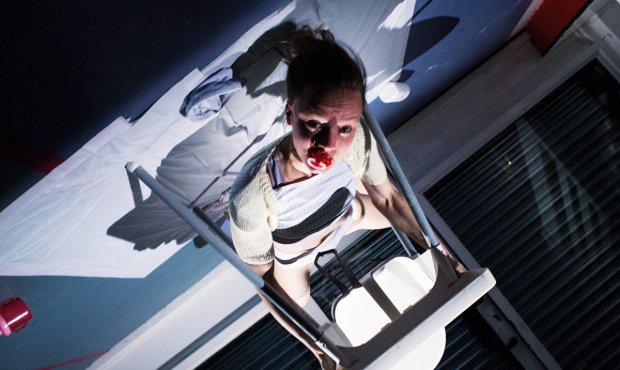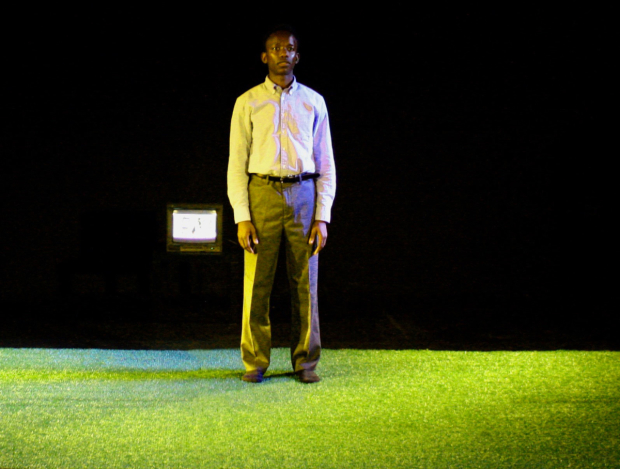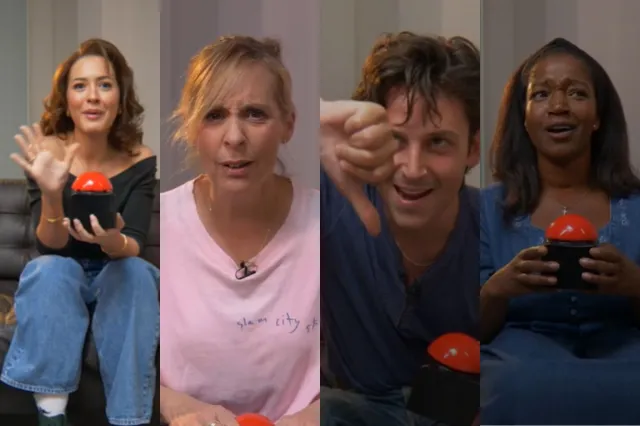Edinburgh's emerging artists can teach big theatres a thing or two
Matt Trueman reflects on this year’s fringe and the pivotal role of emerging companies

© Daniel Hughes
It's not been a vintage Fringe. As a vast free-for-all, albeit a costly one, there's no knowing what each Edinburgh will bring. That's the festival's joy. It's unpredictable in the best possible way. It allows room for the unexpected.
Some years, show after show will blow you away and, for a month, you feel the possibilities and parameters of theatre shifting around you. Others…well, others don't. This didn't – but maybe that's been for the best.
For all its constancy, the Fringe goes in cycles. The biennial British Council Showcase often brings a big boost, shipping in big companies for the final ten days and, with them, others hoping to piggyback on the international promoters it brings to town. Established artists bring their best work to market. Everybody seems to up their game.
But a sparser year such as this opens space for others – emerging companies in particular. Away from the Traverse, where Orla O'Loughlin bowed up with a strong season full of fascinating connections around historic hangovers and education, this year's Fringe gained its energy from young companies.
The Untapped trio – ThisEgg's dressed, Nouveau Riché's Queens of Sheba and Breach Theatre's brilliant It's True It's True It's True – ranked among the best of the entire festival, proof that support from organisations like Underbelly and New Diorama can pay off in spades. Elsewhere I met a lot of nascent theatremakers I suspect we'll see plenty more of in time: first-time playwrights Charley Miles and Nathan Ellis, artists Joana Nastari and Katy Dye, companies like Poltergeist, Noctium and This Noise.
In busier years, they might have been crowded out, but this fringe afforded all of them critical attention and, more importantly, programmers and promoters with schedules to fill. At a time when funding cuts have squeezed the sector's support, and project funding's under particular strain, it's harder than ever to get a foot on theatre's ladder. Not everyone can afford the expenses of Edinburgh – and grad companies with access to university drama society grants have an inbuilt advantage – but those that can benefit from a more fitful Fringe.

© Alice Simonato
Watching young artists en masse, you start to see what they might share and many young shows, this year, felt rooted in care. Whether YESYESNONO's Sam Ward gently questioning his audience in [insertsloganhere], doodling with volunteers as he softly picks their brains, This Noise leaving us with practical reminders about how to restore headspace in an age buffeted by anxiety, or Poltergeist bringing us together for a torchlit vigil at the end of Lights Over Tesco Car Park, as if to prove no-one's really alone out there, there's a sense that the stage can and should be a safe, inclusive space.
It makes for theatre with a utopian spirit; art that, instead of fighting against a system, sets out to create an alternative space. Socially speaking, it reflects campus culture and suggests a generation aware of invisible mental health issues and the way structures can exclude.
Theatrically, I'd argue its born of a backlash. A decade ago, immersive and interactive theatre sought to push audiences' limits, testing us with ever more uncomfortable encounters. Ontroerend Goed betrayed us in Internal and shamed us in Audience, Punchdrunk pushed us around in the dark, and BADAC went so far as to march us through a mock concentration camp. It reinforced the sense that theatre required ethics; that makers had a duty of care for its audiences. In this emerging work, one can glimpse the influence – even if only indirectly – of artists like Chris Goode, Nic Green or the late Adrian Howells, all of whom insist that stages can open up real spaces.
It's something that big institutions still struggle to do, given the commercial pressures they face and the architectural structures many occupy. They could do a lot worse that cast an eye over emerging artists. If they do, even an average Fringe such as this could bear fruit.





![Review: <em>[insert slogan here]</em> (Zoo Charteris, Edinburgh Festival)](https://www.whatsonstage.com/wp-content/uploads/sites/3/2023/06/128777-1.jpg?w=100)













